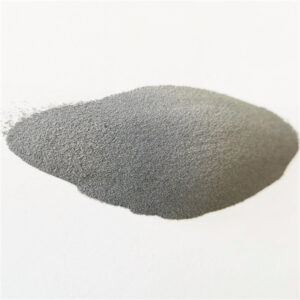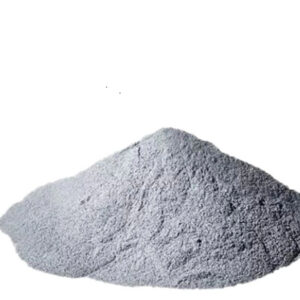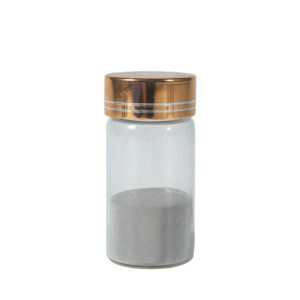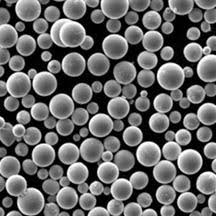EBM 技术 是一种先进的增材制造技术,具有独特的功能。本指南全面介绍了 EBM 技术,包括其工作原理、优点、应用、系统供应商以及与其他 3D 打印工艺的比较。
电子束熔化(EBM)简介
电子束熔化是一种快速成型制造技术,它使用电子束有选择性地逐层熔化和融合金属粉末颗粒。主要特点
- 以电子束为能源熔化金属粉末
- 通过选择性熔化粉末层来制造零件
- 典型的材料包括钛、镍合金、工具钢、铝
- 生产出具有优异性能的全致密部件
- 支持铸造/机加工无法实现的复杂几何形状
- 提供设计自由度、定制功能,缩短交付周期
EBM 可为航空航天、医疗、汽车和其他行业的终端零件提供出色的机械性能、材料纯度、表面光洁度和尺寸精度。
本指南详细介绍了 EBM 工艺、技术、优势、应用、系统供应商以及与其他 AM 方法的比较。

如何 EBM 技术 作品
电子束熔化通过以下关键步骤制造零件:
EBM 流程步骤
- 将 CAD 软件设计的 3D 模型转换为 .STL 文件
- 将文件分层并生成构建序列
- 金属粉末均匀地撒在构建板上
- 电子束选择性扫描并熔化粉末,使各层熔化
- 降低模板,铺上新的粉末层
- 重复这一过程,直至逐层堆砌出整个部件
- 未熔化粉末在制造过程中为部件提供支撑
- 完成的部件从机器上卸下进行后处理
- 高能电子束可实现快速、精确的熔化和焊接
- 加工过程在高温真空条件下进行,以保证纯度
- 未使用的粉末可回收再利用,从而最大限度地减少浪费
企业经营管理系统的类型
目前主要有两类企业行为管理系统:
EBM 系统类型
| 类型 | 说明 |
|---|---|
| 单梁系统 | 单电子束 |
| 多光束系统 | 多平行光束 |
- 单梁系统 使用单个大功率电子束,典型功率为 50-60kW。由于扫描要求,制造速度较慢。
- 多光束系统 同时使用多个光束,速度更快。大大缩短了扫描时间。
- 单光束功率为 3-6 千瓦。多光束系统的总功率超过 10 兆瓦。
- 最新一代的多光束系统大大提高了制造率。
- 光束控制、扫描和聚焦是精密熔化的关键子系统。
环境管理材料
EBM 与一系列金属和合金兼容,包括
EBM 材料
| 材料 | 主要特性 | 应用 |
|---|---|---|
| 钛合金 | 强度高、重量轻 | 航空航天、医疗 |
| 镍超合金 | 耐热/耐腐蚀 | 涡轮叶片 |
| 工具钢 | 硬度、耐磨性 | 工具、模具 |
| 不锈钢 | 耐腐蚀性 | 船用五金件 |
| 钴铬合金 | 生物兼容性 | 医疗植入物 |
| 铝合金 | 重量轻 | 汽车、结构 |
| 铜合金 | 导电性 | 电子产品 |
- Ti-6Al-4V 等钛合金最常用于关键航空航天部件。
- 镍超合金在涡轮发动机等高温环境中表现出色。
- 工具钢可提供持久耐用的模具和工具所需的硬度。
- 生物相容性合金可用于植入物和医疗设备。
- 与激光工艺相比,EBM 能更好地支持钛和铝等活性金属。
企业经营管理的好处和优势
使 EBM 在生产应用中具有吸引力的主要优点包括
企业管理效益
- 完全致密、无空隙的部件
- 卓越的机械性能
- 几何和尺寸精度高
- 良好的表面光洁度和精致的细节
- 后处理要求低
- 污染少的高纯度部件
- 粉末回收减少了材料浪费
- 支持复杂的内部几何形状
- 将多个部件组合成一个设计
与传统制造相比传统制造业
- 实现了铸造或机加工无法实现的更轻、更强的设计
- 将组件合并为单个印刷部件
- 可实现无法成型或锻造的形状
- 准备时间从数月缩短到数周
- 降低小批量生产的成本
EBM 应用
EBM 的优势使其适用于:
EBM 应用
| 行业 | 用途 |
|---|---|
| 航空航天 | 涡轮叶片、结构框架、火箭 |
| 医疗 | 整形外科植入物、手术工具 |
| 汽车 | 原型和定制部件的轻量化 |
| 工具 | 注塑模具、成型模具、夹具和固定装置 |
| 能源 | 热交换器、阀门、泵 |
| 电子产品 | 屏蔽、触点、冷却系统 |
- 航空航天领域广泛使用 EBM 生产更轻、更坚固的钛合金和镍合金零件。
- 医疗行业利用 EBM 的几何自由度和生物相容性进行植入。
- 汽车研究人员利用它进行轻量级优化拓扑设计。
- 可在注塑模具中内置共形冷却通道。
- 石油和天然气行业将其用于高温、高压部件。
- 电子产品受益于 EBM 的精细加工和导电合金。
EBM 系统供应商
提供 EBM 系统的主要制造商包括
EBM 设备供应商
| 公司名称 | 机械品牌 |
|---|---|
| Arcam EBM | Arcam A2X、Q20plus、Spectra H、Q10plus |
| 通用电气添加剂 | Arcam EBM Spectra L、Arcam EBM Spectra H |
| Freemelt | Freemelt ONE、Freemelt TWO |
| 韦兰添加剂 | 考尔德 |
- Arcam EBM 现在是 GE Additive 的一部分,是 EBM 系统的市场领导者。
- Freemelt 和 Wayland Additive 等其他公司也提供更新一代的多光束 EBM 系统。
- 加工能力从 150 毫米 x 150 毫米 x 150 毫米到 1000 毫米的大型机。
- 最新的 EBM 设备提供自动粉末处理和闭环回收功能。
- 针对不同应用提供定制参数和培训支持。
环境管理成本分析
EBM 的生产成本取决于:
环境管理成本因素
- 机器购买价格--1TP450,000 至超过 1TP420 万
- 每公斤材料粉成本
- 部件设计、操作和后处理的人工成本
- 生产量
- 建设速度和利用率
- 能源消耗
- 设备维护和管理费
典型范围
- Ti-6Al-4V 小零件:$20 - 每个零件 150 个
- 较大的航空航天组件:$2000 - 15,000+
- 采用多波束系统进行大批量生产,成本最低
比较 EBM 和其他 AM 工艺
EBM 与其他金属 AM
| EBM | 激光 PBF | DED | 粘结剂喷射 | |
|---|---|---|---|---|
| 材料 | 钛、镍、铝、工具钢 | 钛、铝、钢、镍 | 大多数金属 | 不锈钢 |
| 密度 | 全密封 99% | 全密封 99% | 99% 密集型 | 90-95% 密集型 |
| 准确性 | 优秀,± 0.2% | 优秀,± 0.1% | 中度,± 1% | 中度,± 0.5% |
| 表面处理 | 非常好,Ra 25 μm | 卓越,Ra 10 μm | 粗轧制 | 烧结后效果良好 |
| 建造率 | 中度 | 快速 | 非常快 | 中度 |
| 设备成本 | 高 | 高 | 中度 | 低 |
| 应用 | 航空航天、医疗 | 航空航天、汽车 | 维修、涂层、大型部件 | 系列生产 |
- 与 EBM 相比,激光 PBF 可提供更快的构建速度和更精细的分辨率。
- EBM 材料性能优异,内应力较小。
- 粘合剂喷射成本较低,但需要烧结才能达到完全的密度。
- DED 速度快,但适合大规模工业应用。
- 用户根据材料、质量、速度和预算需求选择工艺。
EBM 的挑战和局限性
EBM 面临的一些挑战包括
- 机器和材料成本高
- 设备供应商和服务支持有限
- 与其他 AM 相比,材料选择有限
- 构建速度低于激光 PBF
- 活性金属粉末的处理和再循环
- 减轻内应力的后处理
- 构建过程中的真空环境要求
正在进行的开发旨在提高制造率、降低设备成本、扩大材料能力,并使该工艺更易于扩展,以适应大批量生产。
未来展望 EBM 技术
EBM 的未来趋势:
- 采用新型多波束系统,建造速度更快
- 500 毫米 x 500 毫米以上的大型制造平台
- 材料范围扩大,包括更多铝合金和铜合金
- 改进粉末处理和闭环回收
- 增强设计和工艺优化软件
- 降低设备成本,更广泛地应用于终端制造业
- 应用于卫星部件、电动交通工具、工具和生物医学领域
EBM 系统的进步将扩大航空航天、汽车、医疗、电子和能源行业的应用范围。
EBM 技术的主要启示
- EBM 使用电子束有选择性地逐层熔化金属粉末颗粒。
- 生产出接近净形的零件,材料纯度高、密度大、强度高、精度高。
- 常见的材料有钛合金、镍超合金、工具钢和铝合金。
- 如今,航空航天和医疗行业是采用 EBM 的主要行业。
- 与铸造、机械加工和其他复杂几何形状的 AM 方法相比,具有更多优势。
- 多光束系统大大提高了制造速度和生产规模。
- 正在进行的开发旨在扩大材料能力和降低成本。

关于 EBM 技术的常见问题
问:使用 EBM 可以加工哪些材料?
答:常见的 EBM 材料包括钛合金、镍超合金、工具钢、不锈钢、钴铬合金、铝合金和铜合金。
问:EBM 生产的部件有哪些?
答:EBM 用于制造关键的航空航天部件,如涡轮叶片、结构框架和发动机部件。它还用于医疗植入物、汽车原型、工业模具等。
问:EBM 的准确性如何?
答:由于采用了精确的电子束熔化工艺,EBM 具有出色的尺寸精度,与设计尺寸相比,偏差不超过 ±0.2%。
问:EBM 是否比 DMLS 等金属 3D 打印方法更快?
答:一般来说,激光粉末床熔融工艺的制造速度比目前的 EBM 快。但新型多光束 EBM 系统的目标是达到或超过激光粉末床熔融工艺的速度。
问: EBM 零件需要进行哪些后处理?
答:典型的后处理包括去除支撑、应力消除热处理、热等静压以及机加工或研磨(如果表面光洁度要求很高)。
问:多波束 EBM 有什么好处?
答:多光束系统使用多个平行电子束熔化层。这在保持 EBM 材料特性的同时,大大加快了制造速度。
问:EBM 是生产多孔部件还是全固态部件?
答:EBM 生产超过 99% 的高密度全固态零件,具有优异的材料完整性和性能,适用于要求苛刻的应用中的功能性最终用途。
问:如何回收 EBM 粉末?
答:可以收集未使用的粉末,过筛去除大颗粒,与新鲜粉末混合,然后重新投入机器重复使用。
问:环境管理是否环保?
答:EBM 具有粉末重复利用率高、废料少和轻质优化设计等可持续发展优势,可在部件的生命周期内减少材料用量。







